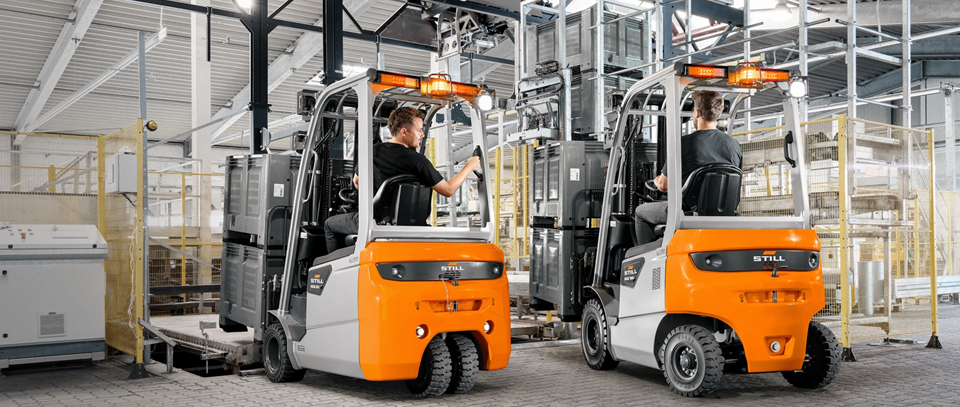Lithium Forklift Batteries: Smart Integration, Safety, and Efficiency in Modern Industrial Operations
Introduction: Why Forklift Power Is Moving Toward Smart Lithium Systems
Across warehouses, manufacturing plants, and logistics centers, electric forklifts are quickly replacing internal combustion and lead-acid models. The reason is no longer just environmental—it’s operational. Lithium batteries have evolved from a simple energy source into an intelligent component within industrial power systems, capable of real-time data exchange, predictive diagnostics, and seamless integration with charging and fleet management platforms.
For decision-makers, the key question is no longer “Should we switch to lithium?” but rather “How do we integrate it efficiently, safely, and intelligently into our existing infrastructure?”
Beyond Battery Replacement — Integrated Industrial Power Systems
Traditional lead-acid batteries worked as isolated energy units. Lithium systems, on the other hand, act as part of a connected energy ecosystem. This shift means that forklift power is now linked to warehouse management, charging infrastructure, and even facility-level energy optimization.
Modern lithium forklift batteries communicate directly with onboard controllers, smart chargers, and warehouse energy management systems (EMS). The result: synchronized charging cycles, reduced downtime, and better visibility of fleet health.
👉 Learn more about industrial forklift lithium ion batteries and how system integration improves uptime and performance across your fleet.
Smart BMS: The Brain Behind Modern Forklift Batteries
At the heart of every advanced lithium forklift battery is its Battery Management System (BMS)—the digital “brain” that ensures safe and optimized operation. Unlike traditional monitoring, a smart BMS can:
- Track the state of charge (SOC) and state of health (SOH) in real time.
- Automatically balance cell voltages for maximum lifespan.
- Monitor temperature and adjust charge/discharge rates to prevent thermal stress.
- Send performance data to operators or cloud dashboards for predictive maintenance.
For multi-shift warehouses, this means operators no longer need to worry about manual checks or unexpected breakdowns. The BMS continuously reports insights such as cell degradation and remaining runtime, enabling data-driven maintenance and operational scheduling.
Fast Charging and Operational Efficiency
One of the biggest advantages of lithium forklift batteries lies in their ability to support fast and opportunity charging.
Unlike lead-acid batteries that require 8+ hours of rest and cooling, lithium batteries can charge up to 80% in just one hour. This capability allows fleet managers to recharge during lunch breaks or shift changes—eliminating the need for battery swaps.
When combined with smart chargers and thermal management systems, fast charging reduces downtime and improves asset utilization. In temperature-controlled environments like cold storage, optimized charging also prevents performance losses that often affect lead-acid systems.
Moreover, smart charging schedules can be synchronized with off-peak electricity pricing, helping large facilities cut operational energy costs without compromising productivity.
Safety and Compliance: The Hidden Edge in Industrial Operations
Safety is not just a compliance requirement—it’s a competitive advantage. Lithium forklift batteries must meet strict U.S. standards such as UL 2580, UN38.3, and OSHA electrical safety guidelines.
A quality industrial lithium solution should include:
- Certified enclosures with fire-resistant materials.
- Integrated thermal and electrical protections.
- Robust communication protocols to prevent overcharging or overheating.
- Clear labeling and traceability for regulatory audits.
By choosing certified systems and reliable lithium battery suppliers, B2B operators minimize risk exposure while meeting corporate safety and ESG objectives.
Total Value Perspective: From Cost to System ROI
While the initial investment in lithium forklift batteries may appear higher, the real ROI becomes evident over time. The value is not just in battery lifespan—it’s in system-wide efficiency:
- Labor savings: no water maintenance, no manual equalization, no battery swaps.
- Reduced downtime: predictive analytics prevent unexpected failures.
- Lower electricity costs: optimized charging during off-peak hours.
- Improved sustainability: reduced waste and better recyclability contribute to ESG goals.
When evaluated from a total operational cost (TOC) perspective, lithium systems typically outperform lead-acid alternatives within 2–3 years, especially in multi-shift, high-utilization operations.
Future Outlook: From Forklifts to Connected Energy Networks
The next evolution of industrial energy lies in convergence. Forklift batteries will soon link directly with onsite storage systems, solar installations, and EMS platforms, creating interconnected energy ecosystems across warehouses and logistics hubs.
Emerging business models like Battery-as-a-Service (BaaS) and real-time fleet analytics will further change how companies manage capital expenditure and performance monitoring. In such ecosystems, forklift batteries are no longer passive energy sources—they’re intelligent assets contributing to energy optimization, carbon reduction, and operational agility.
Before exploring this future, readers may also want to review:
Forklift Battery Market: Trends, Technology, ROI, and U.S. Policy Insights for Smarter Procurement — a complementary analysis on market trends and policy impacts shaping industrial electrification strategies.
Conclusion
Lithium forklift batteries represent far more than a technological upgrade—they are central to a broader transformation in industrial energy strategy. For B2B operators, the path forward is about integration, intelligence, and safety:
- Integration with existing systems to unlock real-time efficiency;
- Intelligence through smart BMS and connected data platforms;
- Safety ensured by certified designs and rigorous compliance.
As warehouses evolve toward fully connected, low-emission operations, lithium technology will remain the backbone of productivity and energy resilience—making smart investment today a long-term operational advantage.
Recommended Reading:


